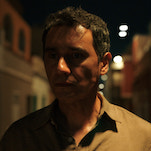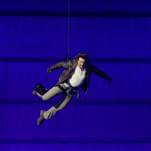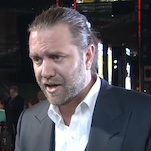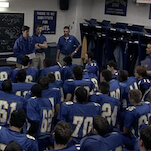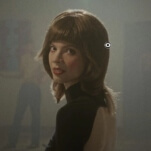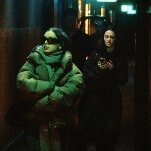With Podcast Canon, Benjamin Cannon analyzes the history of podcasts and interrogates how we talk about the art form.
An underexplored aspect of the podcast listening experience is the queue. While one could argue that the concept is not unique to podcasting—sure, you can indeed add songs to a playlist on whichever streaming service you fancy—the resulting experience in practice surely makes a case for itself. The queue is a place of ordered chaos, where shows of various lengths and genres nestle side by side in harmony. At the time of this writing, no major streaming video service is brave enough to allow its users to create a feed of their choices—television episodes, films, or a mix of both—to be played in succession.
There are right and wrong ways to approach the queue as well. As both a critic and a bona fide podcast sicko, I take an unhealthily holistic approach to my listening, varying it as much as possible in types of shows, their tones, and content, while factoring in my own desires at the same time. I do this in hopes of producing a somewhat destabilizing result, a mix of shows that careen all over the landscape. Add 30+ shows to the queue and you’re bound to eventually forget what is coming next. I find the surprise of unexpected occurrences a wonderful and important aspect of the medium.
One of the many things that I love about queue management (I did mention I was a podcast sicko) is the way it allows listeners to play around with tempo. I’m wild for a show like Screen Drafts, where episodes routinely run in excess of 5 hours—like this nearly seven-hour Planet Hollywood-inspired gem—but I know that after it’s over I’ll want a variety of shorter entries to shake things up. It’s like watching Andrei Tarkovsky’s Solaris—afterward, you’re going to want something a bit more fleet and energetic as an antidote.
The practice has become so normalized for me that I will always follow up an hour-long episode with something running 5-10 minutes on average. I think of these as in-between episodes. A palate cleanser and an amuse bouche all rolled into one. An in-between might be a daily news program, like The New York Times’ excellent digest The Headlines hosted by past Third Coast winner Tracy Mumford, or something more culturally engaging like APM Studios’ The Slowdown, for a bit of poetry and reflection. A favorite French podcast, Amies from Slate Audio, has a brief Monday episode to set up their full-length Friday release and I live for it.
But in my opinion, there is one show that serves as the platonic ideal of the in-between listen, demonstrating the concentrated power an expertly crafted short show can hold. That show, which I’m adding to the Podcast Canon today, is WNYC Studios’ much-missed 10 Things That Scare Me. The brainchild of longtime WNYC producers Amy Pearl and Paula Szuchman, the show ran for 128 episodes between 2019 and early 2020. 10 Things That Scare Me stands as a near-perfect encapsulation of the medium’s ability to break down barriers, make listeners feel more connected to one another, and do so artfully and succinctly. Each installment of the show features an interview subject listing the 10 biggest fears they have in their life. It’s as simple as that. There is no other narration or appearance of a formal interlocutor. Sometimes a fear is simply stated and moved on from, while others are explored in depth. Though famous names are often among their number, the show’s subjects reflect a panoply of human experiences and situations. We hear equally from those living on the streets, those living as refugees, and those living comfortably; from children, from the elderly, and from everywhere in between.
The magic of the show comes largely from its distillation. By the producers’ own accounts, each 5-10 minute episode is culled from an hour or two of interviewing. Working like therapists and emotional midwives, the show’s producers coax from their subjects thoughtful examinations of the traumas and/or irrational bases at the root of their fears. And it works a treat. The fears that get fleshed out in a given episode are not bound to be the standard issue ones, like guns, climate change, or a loved one dying. They are instead often surprisingly unguarded revelations of how a single moment or incident in life can metastasize over time to become a foundational fear.
In a way, it feels of a piece with past experiments in radio as a democratized media platform like Edward R. Murrow’s This I Believe from the early 1950s, later revived by Dan Gediman and Jay Allison for NPR in the late 2000s. It afforded average Americans a chance at the dais, to proclaim how it was they saw the state of modern life, in segments lasting around 5 minutes each. Both iterations of the show came in times following momentous shifts for society, the original on the heels of World War II, and the revival in the wake of 9/11.
Recording in the waning years of Donald Trump’s first presidency and into the early days of the COVID pandemic, 10 Things That Scare Me feels like it arrived too soon, in the middle of its era’s own momentous shift, unable to glean any wisdom or hope from having survived it. From this present vantage, it has taken on a rather unfortunate degree of significance. A large tranche of the respondents’ fears revolve around the notions of America losing its way, becoming less tolerant or welcoming of diversity, and couched in that sheen of era-specific “resistance” politics. In light of this second Trump administration freebasing off his executive powers just over one month in, that posturing feels hopelessly fanciful.
In addition to Pearl and Szuchman, the producers who helped make the show included Daniel Guillemette, Sarah Sandbach, Emily Botein, Odelia Rubin, Melissa Chusid, and Joanna Solotaroff, as well as a few other sporadic contributors. For me, however, the MVP of the bunch is Isaac Jones, who served as sound designer and composer for every episode. I don’t wish to minimize the hard work of everyone else involved; the confessional audio they elicit from interview subjects is impressive. It’s just that I’ve come to see sound designers’ work in podcasts akin to the cinematographer on a film set. They are there to set the tone and create the world at the same time. Jones’ contributions elevate the show above its already intriguing premise, transforming episodes into an escape to some unseen realm. This is achieved through creating sonic “rooms” that the episode progresses through as subjects recount their list of fears.
The sound design of each particular space appears incongruous at first, having little to no connection with whatever fear is being recounted at the moment. In time it becomes apparent that the theme is tied to a fear a few slots down the list, and as soon as that is touched upon, the sound design shifts crisply into another space. Whether it’s having the running of the Kentucky Derby or the sonar pings of a submersible vehicle underscore an interview, Jones works wonders in both situating listeners within these discrete zones while actively playing on our sense of confusion to keep us actively engaged and entertained.
Wading through the mass of collected fears across the show’s entire archive has a reifying effect on the notion of a collective humanity. Though there are several idiosyncratic outliers in every list, the overall effect is an acute sense that there is much more that connects us than not. There are often deeply primal fears, like drowning or being mauled by a wild animal, as well as fears of our then-current moment, like Trump and climate change, but it’s those that fall somewhere in the middle which serve to trace the rough shape of our species.
Though the show wrapped in 2020, the blueprint is so sound that I’ve no doubt we’ll be hearing some version of it in the coming decade. Also, I’d be remiss not to mention that in 2023 Pearl, along with several other producers, was laid off from WNYC Studios. It was a sadly familiar occurrence in the medium, and one emblematic of a certain end for that once vaunted studio, bringing about the end of lauded shows like More Perfect, Death, Sex & Money, and Aria Code. These sorts of indiscriminate cuts cast a pall over the act of celebrating podcasts from any sort of historical remove. Heaping praise on a program whose creators may have been unceremoniously emancipated from its own production is a tricky gauntlet to navigate.
To end on a happy note, Pearl’s commitment to the in-between format continues still, through her involvement with Audio Flux, a unique project focused on generating scores of three-minute experimental audio works from a cohort of upcoming—as well as celebrated—producers. Audio Flux even offers the opportunity for amateur creators to get into the game. The collective is headed by creators Julie Shapiro and John Delore, whose names are destined to be invoked several more times in this canon. In a time of instability across the podcast landscape, the work of collectives like Audio Flux is critical for advancing the medium, sonically as well as socially.
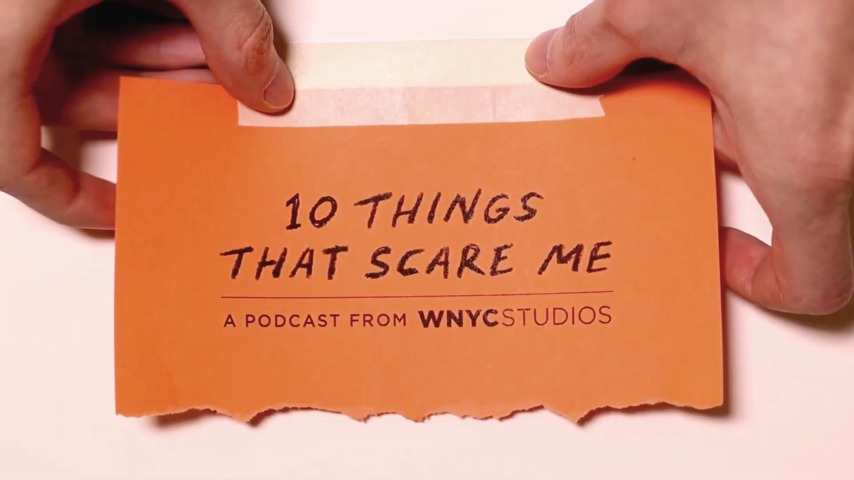


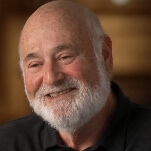



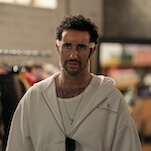
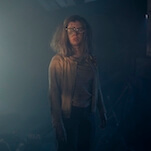












![HBO teases new Euphoria, Larry David, and much more in 2026 sizzle reel [Updated]](https://img.pastemagazine.com/wp-content/avuploads/2025/12/12100344/MixCollage-12-Dec-2025-09-56-AM-9137.jpg)


